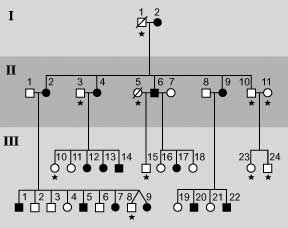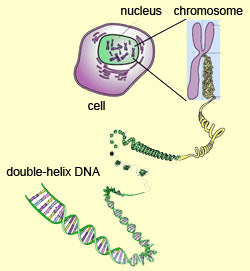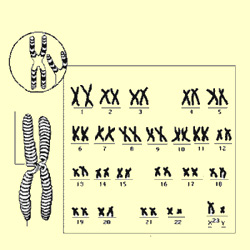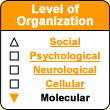|
|
|
|
 |
Communicating in Words |
 |
|
|
|

 |
 |

 |
When these studies were published in the late 1990s and the
early 2000s, some mass media rushed out with reports that
the “language gene” had been discovered. In reality,
of course, a phenomenon such as language is far too complex
to reside on a single gene. To be more accurate, the media
should have talked about “a gene that might be involved
in language”, and even more precisely, as regards specific
language impairment, in the development of the brain
structures that underlie language.
The fact is that discovering a gene is only the first step
in understanding what role it plays. The subsequent steps,
which inevitably require identifying the structure
and function of the protein produced by this gene,
generally prove longer and more arduous.
It’s as if you were trying to understand how a car works
when all you had to go by was a diagram of one of its parts.
No matter how much evidence you had that this diagram did indeed
represent a car part, you would have no idea what the part
really looked like, or what it did, or what other parts interacted
with it, much less what the car as a whole did and looked like. |
|
|
| GENES THAT ARE ESSENTIAL FOR SPEECH |
|
The ability of human beings
to speak involves very fine motor control of the mouth and
the larynx (voice box), a kind of control that other primates
lack.
Research done by the American linguist Noam Chomsky in the
late 1950s and early 1960s highlighted the fact that human
language is universal and complex, yet children acquire it
rapidly with no explicit instructions. Chomsky’s findings
suggested that the human ability to speak might have genetic
origins.
Around the same time, other researchers pointed out that a
small number of children failed to learn to speak. They had
problems in producing and identifying the basic sounds of language
as well as in understanding grammar. This condition is called “specific
language impairment”,
and it includes all language disorders that cannot be attributed
to mental retardation, autism, deafness, or any other very
general causes.
Researchers also observed
that specific language impairment often occurred in more
than one member of the same family and was more likely to
be shared by identical twins than by fraternal ones. Scientists
therefore long suspected that this condition had a hereditary
component, but they did not know much about the genes that
were involved.
All this changed, however, after a study of a British family,
known as the KE family. In this family, out of 37 members
distributed across 4 generations, 15 suffered from some form
of specific language impairment. This high proportion of affected
individuals within the same family indicated, first of all,
that this disorder might be attributed to a single gene transmitted
by either parent. In addition, this gene seemed to be transmitted
by the standard dominant/recessive pattern and was not located
on a sex chromosome.
|

Genealogical tree of the KE
family. Black shapes represent persons with specific language
impairments. Circles represent females, and squares represent
males.
|


The 23 pairs of human chromosomes
at the time of mitosis
|
In 1998,
scientists established a relationship between specific language
impairment and a short segment of chromosome 7. Even this
short segment still contained 70 genes, so analyzing them
would be an arduous task. But then, as luck would have it,
researchers became aware of “CS”,
a young English boy who had specific language impairments
but was not a member of the KE family. Because CS had a
visible defect on chromosome 7, the researchers immediately
focused their efforts on this defective segment of DNA.
And as they expected, this gene, which they named FOXP2,
turned out to be directly correlated with specific language
impairment.
As in the identification of any other gene, the next step,
of course, was to find out what
type of protein this gene produced. |
|
|







